To be clear from the off: this is a song that only the luckiest few will hear in the UK in 2024.
It wasn’t always the case. The red-backed shrike was a widespread summer visitor to much of England and Wales until the middle of the 20th century.
The harsh calls give the shrikes their family name. Both the words ‘shrike’ and ‘shriek’ derive from the same Old English root.
Their song is more delicate and creative, a freewheeling string of warbles, blips and whistles. They borrow freely from the many other species that shrikes must encounter in their long migrations.
In this recording from the Netherlands there are moments that sound like stonechat, chiffchaff, blue tit and blackbird.
The recordist reckons to have noted 28 species being mimicked in the series of recordings they took of this single bird.
Impressive as they are, their vocal skills have tended to be overshadowed by their eating habits.
Shrikes are also known as ‘butcher birds’, for their habit of storing their kills in a ‘larder’ - spiked on a thorn or wedged between branches. That grisly collection might include large insects, small rodents, reptiles and even other small birds.
Handy for a snack later. But also, it seems, for advertising your territory, and impressing a mate with your hunting / food presentation skills.
Fearsome predators for sure, and yet they’re not much bigger than a sparrow.
The male bird is striking. It’s like a common whitethroat pumped up for a role in a Marvel movie - silver-grey head, black mask, orangey back and wings, pinkish flush to the chest and powerful beak.
Does the red-backed shrike have a future in Britain?
The strong easterly winds of May 2024 have delivered an exceptional arrival of red-backed shrikes to some northern spots, with Fair Isle in the Shetlands recording at least 32 birds on one day, its second ever highest total.
Most of these wind-blown vagrants will likely reorient themselves quickly and return to the continent, where they are much more common. But we can hope that some will find prizes enough to stock their larders, and attempt to raise families here.
A few pairs have managed to do so in recent years, with sporadic, scattered breeding attempts from southern England all the way to those northern isles that have seen the recent influx.
Efforts to ‘scrub up’ our landscape might play their part too. Like the turtle dove, the nightingale, the cuckoo and so many warblers, shrikes thrive in messy, thorny places. The kind of marginal common land deemed unremarkable and limitless just a few decades ago.
Returning wilder fringes to our countryside might just mean our summers are entangled with those of the butcher bird once again.
Red-backed shrikes spend the winter in central-east and southern Africa. In summer they are found across mainland Europe and into west Asia.
Further reading:
D. B. Peakall (1962) The past and present status of the Red-backed Shrike in Great Britain, Bird Study, 9:4, 198-216
Birdlife International: Migratory bird of the month: Red-backed Shrike
Links of the week
💚 Joy is the Justice (We Give Ourselves)
(…)
Joy is all the Black birds,
flocked together,
too many to count,
too many to name,
every one different
from the next,
swirling in singularity
across amber-purpled sky.
(…)
Listen to ornithologist and poet J. Drew Lanham read all of his poem for On Being, (and catch-up with his beautiful interview from 2021).
🦕 Birds: Brilliant and Bizarre is a new exhibition at the Natural History Museum in London, running until January 2025.
One last walk of 2024
Learn birdsong with me, in person - we’ll listen for firecrests, warblers, and woodpeckers for our final half-day birdsong ID workshop of 2024, in Stanmer Park (Brighton, Sussex). Saturday 8 June.
£35 (with a £10 discount for paid subscribers and graduates of Birdsong Essentials - contact me for the promo code if you need it).
Thanks for reading and listening.
This is instalment #21 in 2024’s cycle of Shriek of the Week. You can catch up with Goldfinch, Tree Pipit, Blue Tit, Reed Warbler, Cuckoo, Willow Warbler, Swallow, Green Woodpecker, Blackcap, Nuthatch, Starling, Chiffchaff, Collared Dove, Wren, Dunnock, Great Spotted Woodpecker, Robin, Great Tit, Song Thrush and Blackbird.
June is the last month until 2025 that there will be weekly posts, but monthly Early Bird Club Zoom sessions continue every first Saturday through the year for paying subscribers. §
Thank you to Cecilie, Jane, Fiona and Hanka for your recent support. 🥳
~ Charlie
Media credits
The recording was made by Michel Veldt in the Netherlands and is reproduced by kind permission. More information accessible at www.xeno-canto.org/651446.
The image is of a male red-backed shrike in Slovakia, taken by Radovan Václav and published on Flickr. It is reproduced under CC license CC BY-NC 2.0 DEED creativecommons.org/licenses/by-nc/2.0/


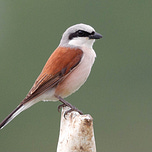


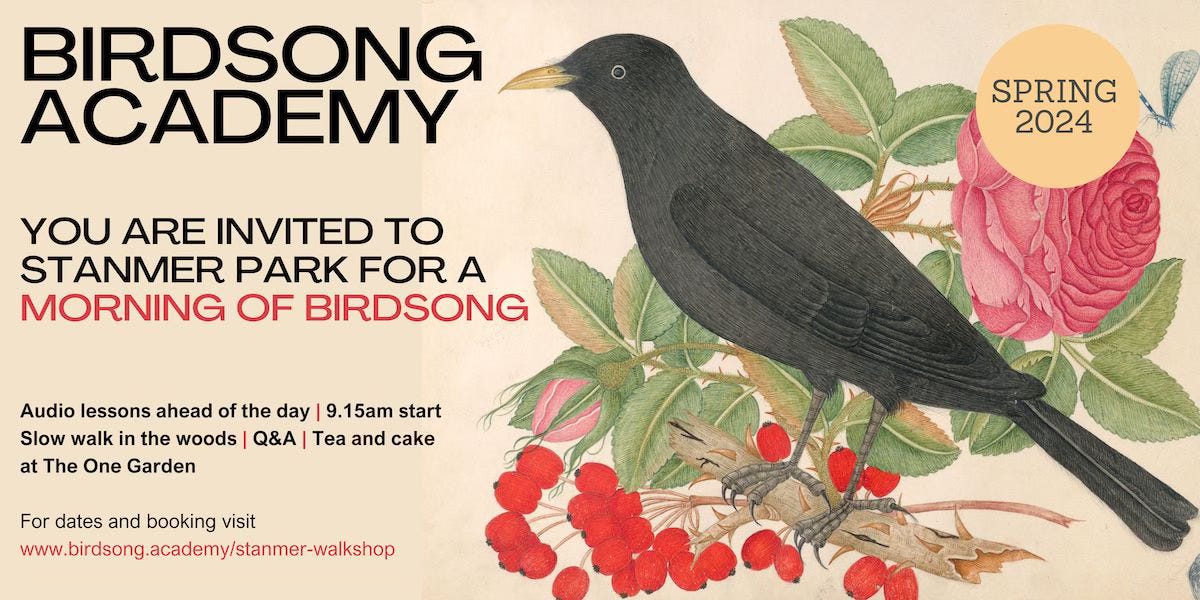


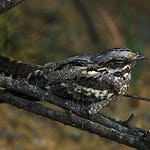
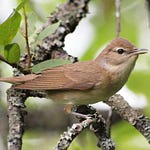

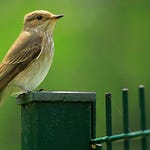


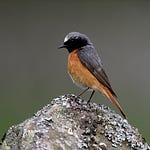
Share this post